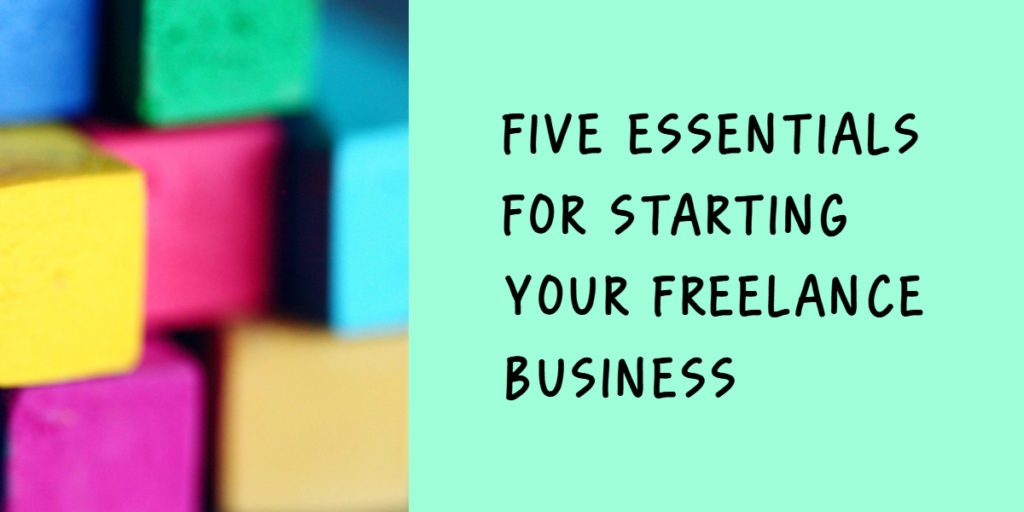Congratulations! You have decided to start your own freelance business. Freelancing comes with a lot of perks. You can work from anywhere there’s an internet connection. You can set your own work hours. Morning person? Night owl? Need to take time out in the middle of the day for family obligations? No problem. If you are a good writer and like to learn, you will do well. However, to command better than average rates for your work, you will have to have to look like the professional that you are. Here are the five essentials every freelancer needs to project professionalism.
Your brand/domain name
Many freelancers use their name as their brand name. This makes it easy from a tax standpoint. You can operate as a sole proprietor and can bypass some Doing Business As filings. Depending on how common your name is, you may need to include a middle initial or a tagline. A .com URL is preferable to other listings such as .biz or .co, though that may change over time as alternative domains gain acceptance. It is common for a web hosting provider to offer a free URL for the first year, so if you are considering a professional website (see below) you might find it advantageous to get both URL and hosting at the same time.
Your logo and branding
Once you have decided on your business name and secured your URL, you will need a logo. You can pay someone to design a logo, but it is easy to do it yourself with free online graphics software. Stencil is easy to use and their free plan lets you download ten images per month. This is enough to get started.
Select a font or two You will need to select a font for your logo. It should be easy to read and in line with the vibe you want to project. In general, avoid fonts which have curlicues, those with a strong ethnic look, and those which are associated with a particular historical era unless you intend to play this up throughout your marketing. Some logos just use a single font and perhaps an icon or brand mark, while others include a tagline or URL in a different font.
Select brand colors Perhaps even moreso than fonts, colors give off a vibe. For a simple, clean look, stick with a limited color palette of two or three colors plus black and gray. One of the colors should be a fairly bright color which ”pops” and helps your marketing attract attention.
Select an icon if you like Stencil has a library of free-to-use icons. Combine these to create a logo that is unique.
Download your logo with a transparent background (.png). You will use this file on business cards, letterhead, proposals, and your website, to name a few.
A professional email address
While you can get by with a .gmail or .icloud email address, a professional address is inexpensive (or even free) and elevates your brand. Gsuite gives you access to office tools like Google Docs, Google Sheets, and Google Slides. If you have office software, then a free email account may be sufficient for your needs. Consider Zoho mail. The cloud-only plan is free.
Website
Your website is your online hub. It is the equivalent of being listed in the yellow pages thirty years ago. There are many options for free or inexpensive websites. Yours doesn’t have to be extensive. It mostly needs to be there. Options include a Google site or About.me, Wix, Squarespace, SiteJet, site builders at GoDaddy and other hosting companies. Hosting and a WordPress site.
Your website should contain the Home page, which explains what you do and who you do it for. The About page builds the case for “why you?” Contact page provides information about how to get in touch with you, either through a form, email, or phone. As you get clients, a Testimonials section is good to add. A Services page can describe in more detail the different services you offer. A Portfolio page can link to your work which is published under your byline. If your portfolio is mainly non-byline or ghostwritten work, then offer sample articles upon request. A simple one-page design is sufficient.
Business Cards
While you may never meet most of your clients face-to-face, in-person networking is still a common and effective way to get more work. And physical printed business cards are still the most common way to share contact information at IRL networking sessions. They are inexpensive and you won’t need too many to get started, so there is no reason not to have them. You don’t need special graphic design skills. You will be able to upload your logo and use a complimentary font for the other information. Your URL and email address are a must and sufficient. Include your tagline, which should describe succinctly what you do and who you do it for, who has forgotten meeting you can recall why they have your card.
You can go a long way with these basics, and improve upon them as you gain more experience and grow your business. None of these items is a big investment, money-wise or time-wise, so don’t hesitate to jump in and see how far they can take you.

-
Save

